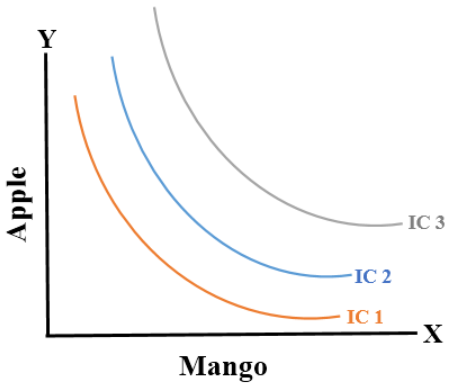Understanding the law of diminishing marginal utility is crucial for economists and businesses when analyzing consumer behavior, setting prices, and predicting how changes in factors like income or prices might affect the quantity demanded of goods and services.
Consumer equilibrium is said to occur when the consumer allocates their income in such a way that the marginal utility per dollar spent is the same for all goods. This is a point where the consumer maximizes overall satisfaction given their budget constraints.
Consumer equilibrium citation can be seen in the form of an equation:
Px = MUx / MUm
Px= Price paid for the commodity
MUx = Marginal utility of X commodity
MUm = Marginal utility of money
Marginal utility of Money
Marginal utility of money refers to Utility of money or worth of money to a consumer. Utility of money can differ for different consumers. For example, Rs.100 may be worth two meals for a poor consumer, but for a rich consumer, this amount may seem insignificant.
Indifference Set
The indifference set, also known as an indifference curve, is a graphical representation used in microeconomics to show combinations of two goods that provide a consumer with an equal level of satisfaction or utility. On an indifference curve, a consumer is indifferent between any two points because they represent different combinations of goods that provide the same level of satisfaction. It represents the different combinations of two goods, the consumption of which gives equal satisfaction to the consumer, given the level of their income and prevailing market prices.
Indifference curve
The diagrammatic presentation of an indifferent set is termed as an indifference curve. It shows different combinations of two commodities between which the consumer is indifferent. Each combination gives the same level of satisfaction to the consumer.

Indifference map
Indifference map refers to the diagrammatic representation of more than one indifference curve. These may be for different commodities or at a different level of income of the consumer.
Properties Of IC
- Slope of IC shows MRS
- IC slopes downward from left to right
- IC is convex to the origin
- In an indifference map, higher the IC, higher the satisfaction.
- ICs do not cut or intersect each other.
Budget Set
It refers to the attainable set of combinations of two goods that the consumer can buy given his income and market prices of such two goods. It represents the allocation of income of a consumer between two commodities that derive him the maximum satisfaction. For example, if say, the income of a consumer is Rs. 20 and they decide to allocate Rs. 10 for 5 units of a commodity priced at Rs. 2 per unit and the remaining Rs. 10 on 10 units of another commodity priced at Rs. 1 per unit, in the way that this combination gives them the maximum satisfaction.
Budget Line
A line which shows the different set of combinations of two goods which a consumer is able to buy, given his income and the prices of such two goods.